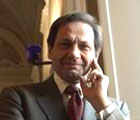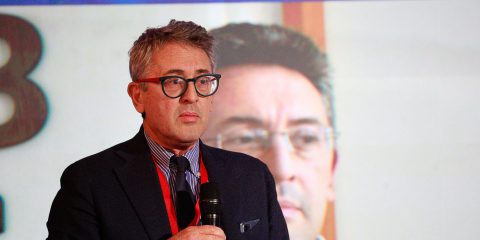Europa

Riportiamo di seguito l’intervento di Guido Salerno Aletta, direttore generale della Fondazione Ugo Bordoni e membro dell’Advisory Board di Key4biz, a “Workshop on Market Mechanisms for Spectrum Management“, Ginevra 22-23 gennaio 2007.
Promosso congiuntamente dall’ITU e dalla Fub, il workshop ha affrontato diversi aspetti riguardanti la gestione dello spettro radioelettrico. A dibattere sono intervenuti i rappresentanti delle Istituzioni e noti esperti nazionali e internazionali del comparto dell’ICT.
Excellencies, Ladies and Gentlemen,
The ITU, in collaboration with the European Broadcasting Union (EBU), Ugo Bordoni Foundation (FUB) and the United Nations Environmental Programme (UNEP INFO/RAC-MAP), have formed a multi-stakeholder partnership entitled “Shaping Tomorrow’s Networks (STN)” as one of a series of follow-up initiatives to the World Summit on the Information Society (WSIS).
The programme’s main area of focus is ICT convergence. It aims to provide a detailed study of integrated telecommunication infrastructures that will allow for timely and more efficient global information exchange, including the identification of potential enabling technologies and suitable business models.
Furthermore, the Programme will tackle key issues related to convergence; in particular, the adaptation of policy and regulation to facilitate the creation of tomorrow’s networks.
Telecommunications growth is one of the economic and social most relevant aspects of recent years. As the last century was defined the transportation era, everything is now linked to the communications environment. A pervasive revolution, like the ones based on coal, oil and electricity.
Telecommunications growth means an ever larger number of users operators, connections and services. It means more and more bandwidth and longer periods of network utilisation. This is the way to build the “On Line Society“.
Definitely, a combination of two milestones, transportation and communications, is the perspective of this new century. The goal: “Ubiquitous Society”.
In the last fifteen years, Internet in fixed networks, and mobile services in radio access-based- network, opened the door to the future.
In this period, a large number of different fixed networks, each of them devoted to a specific service (i.e.: telex, cable television, public switching telephony), rapidly converged into a digital integrated network, where a large bandwidth has been requested. In fixed network, digitalization and IP protocol have been gradually adopted.
In radio based networks digitalization moved slower, IP is partially used. While different and innovative services converged into the new broadband fixed networks, radio based networks still serve only the historical ones.
Nevertheless the radio access technology, related to mobile or fixed networks, become able to provide different services, historical and innovative ones: voice, data/internet, SMS, MMS, video streaming. So, still now, the utilization of radio frequency bands is fragmented into innumerable different services.
Natural spectrum scarcity is emphasized by this “inefficient” allotment. An innovative approach to spectrum management becomes crucial to cope with the foreseen growth of the sector.
Three main families of services, and related manufacturers and operators, are competing in the spectrum arena: access, broadcasting and mobile.
The secondary frequency trading, yet admitted in the European Union countries, is not a decisive solution.
New concepts, like technological neutrality and service neutrality in spectrum utilization have been recently proposed.
Spectrum management is a public policy that probably implies a more comprehensive strategy: priority to digital divide reduction; costs/benefits analysis of the proposals; revised framework on standardization process; common view about the patent fees related to new administrative standards.
In any case, a rational spectrum utilization requires policies able to manage different aspects and often conflicting goals:
a) users driven approach, as the growing number of connections and the larger bandwidth foreseen implies more spectrum;
b) guarantee of availability and continuity for specific radio based services: emergency, security, defence, disaster recovery, science and research, maritime, aeronautical, etc;
c) reduction of digital divide in rural areas and in less developed countries through a worldwide harmonized allotment of spectrum for radio access to the network, as requested by USIS;
d) faster digitalization of all kind of transmissions, as quality improves and digital dividend results: new operators and new services will be so able to enter in the market;
e) introduction of new technologies, and innovative architecture for radio based networks. It’s necessary to increase the spectrum efficiency: even more bit-rate per second, microcellular architecture also for traditional services, Software Defined Radio technology, smart antennas, MIMO technology, etc;
f) convergence toward IP, with an intranet based architecture for the specific services as in b), in order to avoid any risk;
g) protection of the investments made by operators to obtain the individual right of use of the frequencies and to roll out the networks;
h) flexibility in the use of different technologies related to the same service, according to fair competition principles and Consumers Protection Law;
i) interoperability of end user devices based on new digital technologies with existing analogical networks;
j) Quality of Service, particularly in planned networks based on individual right of use of frequencies to guarantee the Wireless Quality of Service and a more efficient spectrum utilisation, a Dynamic Bandwidth Allocation (DBA) scheme has been proposed. This scheme is based on smart technologies at both radio and MAC layers.
Spectrum management is a charge of the States, directly and through International Organizations in order to harmonize. ITU has not only Member States as stakeholders, but also Sector Members, representing manufacturers, operators, universities and research centres.
Spectrum management does not deal with MHz, deals with the future of communications.
I would like to take this opportunity to thank Mr Timoveev Director of the Radiocommunication Bureau as well as Dr. Tim Kelly, Head of the Strategy and Policy unit, Mr. Marco Obiso and Ms Cristina Bueti project managers for this event.
I am proud to be here, now, to welcome You all.
‘Tlc e convergenza: il cammino accidentato della crescita’ è il nuovo libro di Sandro Frova (a cura di), con i contributi di Alessandro Nova e Andrea Ordanini ed il supporto di ANIE-Confindustria. Il volume sarà distribuito da Key4biz gratuitamente in formato elettronico martedì 20 febbraio 2007.












